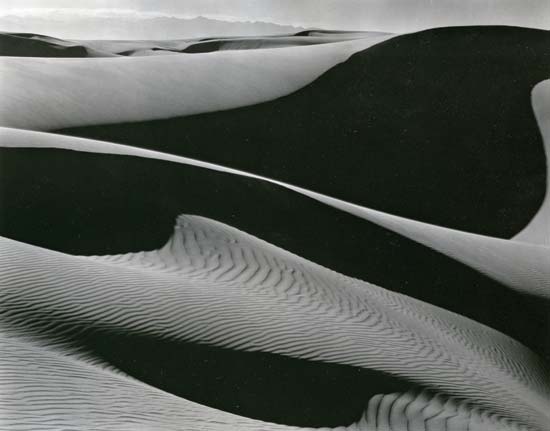
This cup of steamy coffee you are sipping from right now while reading this article—how much water do you think was used to make it? You probably guessed it took a more than just 8 ounces of water, but I doubt you got even close to the actual number. According to Trucost, a company that provides sustainability data, it takes some 135 liters of water to make one cup of coffee (since we just switched to metric units, one 8-oz cup is 0.25 of a liter). Most of this water was used to grow the coffee beans and soak them during processing.
And it’s not only food processing that uses vast quantities of water. By Trucost’s calculations, about 3,900 liters of water are consumed during the manufacturing of a single t-shirt. And nearly 13 tons of water are required to manufacture a single smartphone, with nearly half of it due to pollution and cleanup during manufacturing and assembly.
A Scarce Commodity
“Nothing is more useful than water, … but scarcely anything can be had in exchange for it.” –Adam Smith
Global population growth, increased industrialization, rapid urbanization, and changing diets are increasing the demand for water at an alarming rate. As fresh water makes up only 2.5 percent of the world’s water supply, the United Nations’ World Water Development Report 2015 estimates that by 2030, demand for fresh water will outpace supply by almost 40 percent, impacting two thirds of the world’s population.
“The future political impact of water scarcity may be devastating,” said former Canadian Prime Minister and IAC co-chair Jean Chrétien at a UN Security Council meeting in 2012. “Using water the way we have in the past simply will not sustain humanity in future. The IAC is calling on the United Nations Security Council to recognize water as one of the top security concerns facing the global community.”
Water Stewardship is Linked to Better Business Outcomes
Ecolab is a global supplier of water, hygiene and energy technologies. It helps a broad spectrum of companies in industries that range from food processing to hospitality and healthcare, to industrial production, to advance their water stewardship and reduce their impact on the environment.
Ecolab collects real-time water usage data from a Microsoft Azure cloud-based network of some 36,000 sensors around the world. Ecolab leverages the data—17 billion data points per year—and advanced analytics and visualization software tools to give its customers an unprecedented level of operational insight they need to meet their sustainability goals. And the results speak for themselves.
Kemps dairy farm in St. Paul, MN, implemented Ecolab’s “clean in place” process and is saving 963,000 gallons per year while improving quality, reduce process time and saving energy.
Another example of the savings achieved by advanced water saving technology is modern office building in Southern California that reduced water consumption by 22%, saving nearly one million gallons per year, a direct saving of over $3,000 annually.
Companies that employ a comprehensive approach to water management, one that goes beyond mere conservation and look for opportunities to reuse and recycle water, find that water stewardship is inextricably linked to better business outcomes: higher product quality, greater operational efficiency, and enhanced safety and compliance.
Reimagining the Way Water Is Managed
It’s time to rethink the water cycle: to shift business practices away from treating water as an unlimited supply of a consumable good toward water as a recyclable asset. To do this, businesses must value water as a business asset and make smart water management decisions to mitigate water-related risks.
Water stewardship must be more than just a well-intentioned phrase. It should be planned and managed like any other business activity, and companies considering investing in water-saving technologies should make the business case for proactive water management by conducting a business analysis that takes into consideration the risk-adjusted cost of water, technology implementation, and direct savings.
Ecolab’s Water Risk Monetizer is a financial modeling tool developed by Ecolab, Microsoft and Trucost. The software tool helps prioritize locations and operations at greatest risk based on location, water scarcity, and water quality factors, and calculates rate of return for water management improvement projects to further reduce water, energy and labor costs.
This type of data-driven risk and opportunity assessment helps businesses factor water scarcity into strategic decisions that support business growth and help ensure the availability of fresh water for future generations.
Driving Change
Internet of Things sensor technology and data analytics are a part of the solution, but they aren’t the solution. They need to be exploited as part of a deliberate effort to run the business with a lot less water and reduce costs, leading to smarter and better use of water.
Both Ecolab and Microsoft are pursuing this vision.
By 2030, Ecolab aims to conserve 300 billion gallons of water annually by reducing water consumption of its customer base and within its own operations. The saved amount equals the annual drinking needs of more than 1 billion people!
Microsoft, too, is investing in transforming the future of water, practicing responsible water stewardship and driving behaviors and operations change. The company is pursuing opportunities to improving water efficiency across data centers, office buildings and manufacturing locations.
Both Microsoft and Ecolab believe that by taking a strong position on water stewardship, they not only benefit internal operations, but they also add value to the company’s long-term strategic goals and the communities they serve and operate in.
Image: Dunes, Oceano (Edward Weston 1936)
